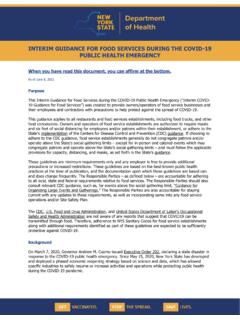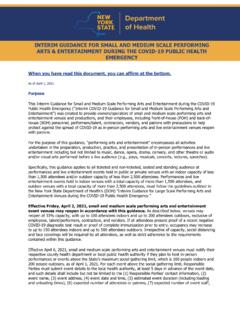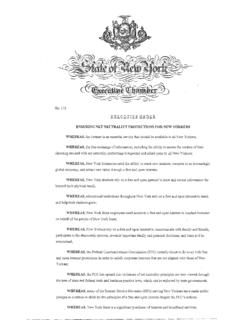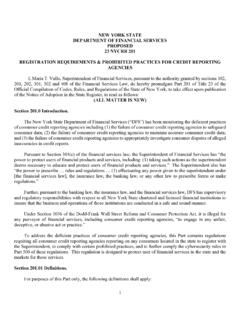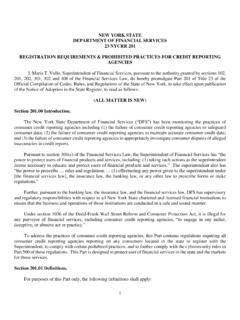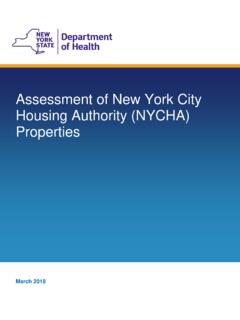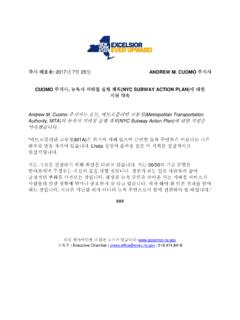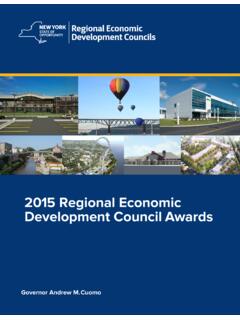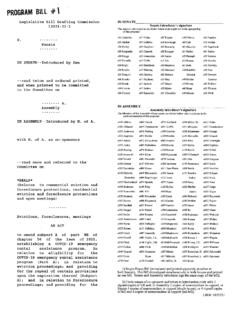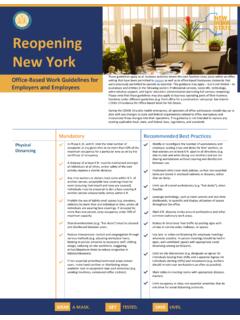Transcription of INTERIM GUIDANCE FOR HAIR SALONS AND BARBERSHOPS …
1 INTERIM GUIDANCE FOR HAIR SALONS AND BARBERSHOPS DURING THE COVID-19 PUBLIC HEALTH EMERGENCY When you have read this document, you can affirm at the bottom. As of May 7, 2021 Purpose This INTERIM GUIDANCE for Hair SALONS and BARBERSHOPS during the COVID-19 Public Health Emergency ( INTERIM COVID-19 GUIDANCE for Hair SALONS and BARBERSHOPS ) was created to provide owners/operators of hair SALONS and BARBERSHOPS and their employees and contractors with precautions to help protect against the spread of COVID-19 as hair SALONS and BARBERSHOPS reopen. This GUIDANCE applies only to hair service businesses including hair SALONS , BARBERSHOPS , and other similar hair service businesses.
2 This GUIDANCE does not apply to nail SALONS , tattoo parlors, or any other non-haircutting-related personal care services or activities, including but not limited to: beard trimming, nose hair trimming, facials, manicures/pedicures, makeup application, threading, tweezing, or waxing. These guidelines are minimum requirements only and any employer is free to provide additional precautions or increased restrictions. These guidelines are based on the best-known public health practices at the time of Phase II of the State s reopening, and the documentation upon which these guidelines are based can and does change frequently.
3 The Responsible Parties as defined below are accountable for adhering to all local, state and federal requirements relative to hair SALONS and BARBERSHOPS . The Responsible Parties are also accountable for staying current with any updates to these requirements, as well as incorporating same into any hair salon or barbershop operation Safety Plan. Standards for the Responsible Operation of Hair SALONS and BARBERSHOPS in New York State No hair SALONS or BARBERSHOPS can operate without meeting the following minimum State standards, as well as applicable federal requirements, including but not limited to such minimum standards of the Americans with Disabilities Act (ADA), Centers for Disease Control and Prevention (CDC), Environmental Protection Agency (EPA), and United States Department of Labor s Occupational Safety and Health Administration (OSHA).
4 The State standards contained within this GUIDANCE apply to all hair SALONS and BARBERSHOPS in operation during the COVID-19 public health emergency until rescinded or amended by the State. The owner of the hair salon or barbershop, or another party as may be designated by the owner (in either case, "the Responsible Parties"), shall be responsible for meeting these standards. Hair salon and barbershop owners are reminded to follow existing health and sanitary standards except where this document provides a stricter standard, in which case this document controls. Existing standards relating to SALONS are available on the Department of State s website by clicking here.
5 Existing standards relating to BARBERSHOPS are available on the Department of State s website by clicking here. The following GUIDANCE is organized around three distinct categories: people, places, and processes. 2 I. PEOPLE A. Physical Distancing Responsible Parties must ensure that the workforce and customer presence in any hair salon or barbershop is limited to no more than 75% of the maximum occupancy for a particular area as set by the certificate of occupancy, inclusive of customers, who must maintain six feet of separation from others, except during the haircutting service, and, in all cases, must only be permitted entry into the hair salon or barbershop if they wear an acceptable face covering .
6 Provided, however, that the customer is over the age of two and able to medically tolerate such a covering ; and Responsible Parties must ensure a distance of at least six feet is maintained among employees and customers at all times, unless the core activity requires a shorter distance ( providing a haircut, operating appointments desk, or cash registers). Employees must wear face coverings any time they interact with customers ( ringing up a purchase, wrapping an item to hand off) and any time that employees must come within six feet of another person. Employees must be prepared to don a face covering if another person unexpectedly comes within six feet.
7 O Acceptable face coverings for COVID-19 include but are not limited to cloth -based face coverings and disposable masks that cover both the mouth and nose. o However, cloth , disposable, or other homemade face coverings are not acceptable face coverings for workplace activities that typically require a higher degree of protection for personal protective equipment (PPE) due to the nature of the work. For those activities, N95 respirators or other PPE used under existing industry standards should continue to be used, as is defined in accordance with OSHA guidelines. o Hair salon owners must continue to comply with 19 NYCRR Sec.
8 And ensure an adequate supply of PPE ( N-95 or N-100 respirators) is available at each workstation. Responsible Parties may modify the use and/or restrict the number of work stations and employee seating areas, so that workers are at least six feet apart in all directions ( side-to-side and when facing one another) and are not sharing workstations without cleaning and disinfection between use. o Responsible Parties must ensure that customer seating allows customers to maintain a six-foot distance from all others except for the employee providing service ( barber chairs must be six feet apart from one another, unless a physical barrier is installed between barber chairs).
9 Installing physical barriers should be considered where possible to divide employee workstations in personal care locations ( between barber chairs) and in accordance with OSHA guidelines. Physical barrier options may include: strip curtains, plexiglass or similar materials, or other impermeable dividers or partitions. Responsible Parties must ensure that at appointment desks and check-out registers, employees wear face coverings and enact physical barriers in areas where they would not affect air flow, heating, cooling, ventilation, or otherwise potentially impair health or safety.
10 3 Responsible Parties must prohibit the use of small spaces ( behind cash registers, elevators, stock rooms) by more than one individual at a time, unless all individuals in such spaces at the same time are wearing acceptable face coverings. However, occupancy must never exceed 75% of the maximum capacity of the space, unless it is designed for use by a single occupant. Responsible Parties should increase ventilation with outdoor air to the greatest extent possible ( opening windows, leaving doors open), while maintaining safety protocols. Responsible Parties should encourage the use of touchless payment options or pay ahead, when available.
